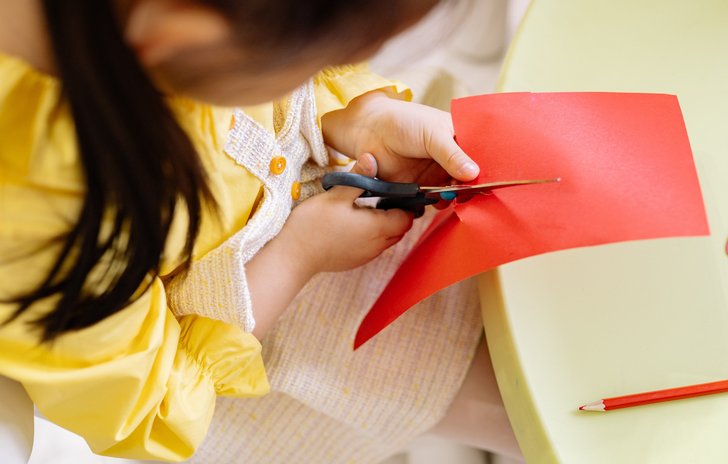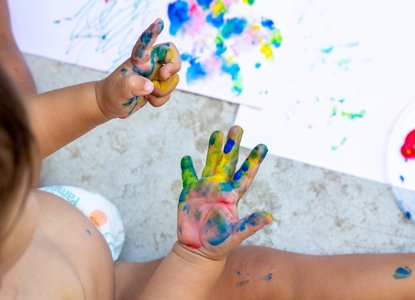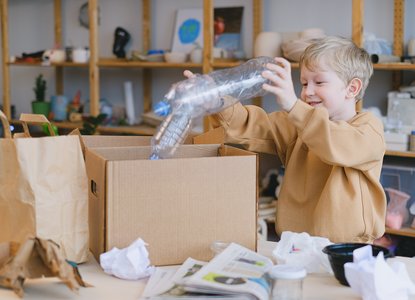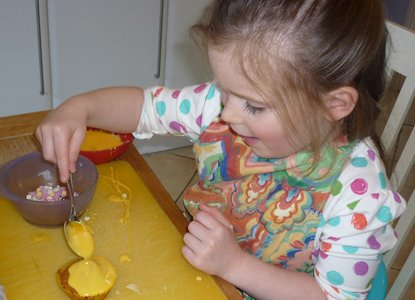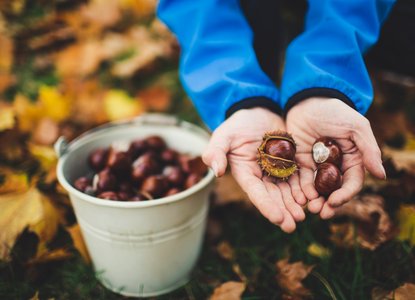Making a collage will support your child’s creativity. As they arrange and manipulate items they will develop their muscle control and coordination. They will explore colour, shape, pattern, texture and different materials, and will be learning about the world around them as well as building their mathematical and scientific knowledge. Chat together about what you’re doing, and they will learn many new words.
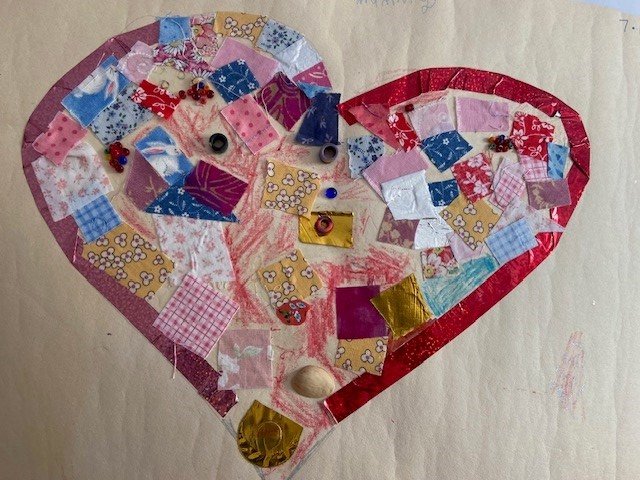
No need for glue! You can make a collage without glue, this is an activity you can do at no cost using recycled and natural items. Scroll down to find out how!
Getting Started:
Create a bits and pieces box
Begin collecting suitable small items before they go in the recycling. For example, magazines and leaflets, wrapping paper, birthday cards, bottle tops, ribbons/string and colourful wrappers. (Small items can be a choking hazard to young children, so make sure you supervise them.)
- Offering a number of similar items, such as bottle tops or sweet wrappers may encourage children to create patterns or shapes with them.
- Capture your child’s interest with images of things they like, for example; wrapping paper of a favourite character, cars from a magazine or their favourite colour.
- Get prepared: If you are using glue, cover surfaces with an old tablecloth, or stick down newspaper/a bin bag with masking tape. Protect their clothes with an apron or old t-shirt.
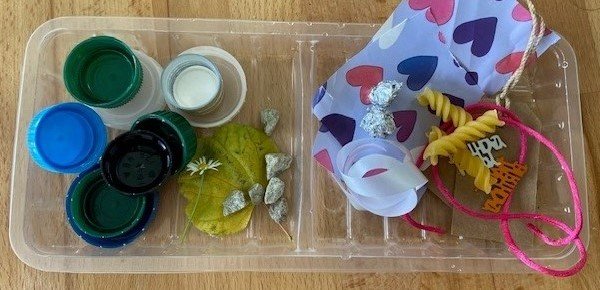
Glue Collage
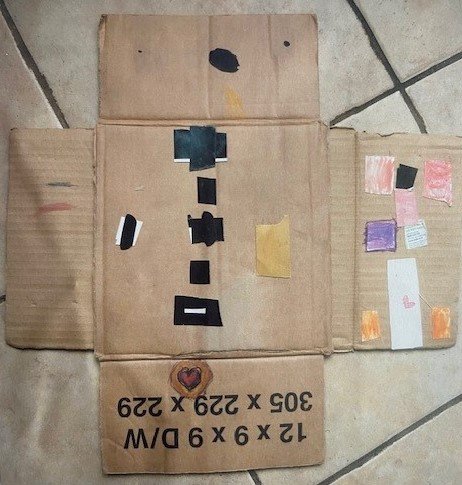
Offer your child a selection of items to choose from. Present them in plastic boxes or on a tray to reduce mess. Sorting items into colours or different types of materials, will make it easier for your child to see what's available and make more thoughtful choices.
- Use thick paper or card as the background (the side of an old cereal box works well).
- A glue stick can be used for small/light items. For larger items use PVA glue, (in an old yogurt pot with a lollipop stick spreader).
- Collaging is a good opportunity to practice using scissors. Encourage your child to have a go at cutting up strips of card or cutting out images from cards, wrapping paper or magazines. If they aren't able to use scissors yet, show them how to tear pieces of paper instead.
- If it's their first time using glue they may need to explore it a little before using it, let them feel it's texture and begin to explore how it works.
- Follow your child's lead, they may want to make a picture (like the robot above) or pattern with the collage materials, or they might just select and stick the items they like.
- Chat with them as they work and praise their ideas, and you will be building their confidence to experiment and explore their own creativity.
No Glue Collage
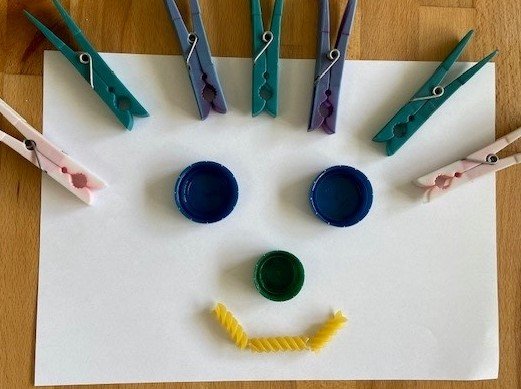
Find something to use as a background or frame to contain the collage materials, for example a piece of paper or card, a place mat, tray or small table top. Select some items from your bits and pieces box and get arranging. Remember to take some photo's before you tidy away!
- Having no glue simplifies this activity - it removes the distraction of exploring the glue, so children can focus on their arrangement. There's no risk of making a mistake, if they change their mind they can just move an item. Plus, there's less mess!
- Heavier collage items will be more effective as they will not slide around as easily. If you don't have many suitable items, add some dry pasta, small balls of kitchen foil, or clothes pegs.
- You could suggest a theme for the collage - for example, suggest your child makes a picture with some Christmas decorations, invite your child to select a particular colour to focus on, or use natural materials (see below).
- Talk with your child about how they choose to arrange the materials. Use positional language, such as next to, above, below.
Natural Materials Collage
Go for a nature walk, visit a park or the beach and collect items you find on the ground (autumn is a great time for this) such as twigs, stones, leaves, shells, acorns, conkers and seeds.
- You could create a collage outdoors. Find a comfortable place to sit, and arrange the items you've found in a pattern, shape or picture. Take a photo of your collage and then return the items to where you found them.
- Use sticks to create a frame for your natural collage, or find a frame, such as a large rock, park bench or low wall.
- Alternatively take a small selection of items home with you and make a collage at home.
- Talk with your child while they are working, describe the shape, colour and texture of the materials they choose.
Large Scale Collage
The size of your collage is only limited by the items you choose to use. Children will really enjoy building a giant collage with items from around the house, and this activity will get you working and chatting together as a team. Let your imaginations lead the way!
- For a giant indoor collage gather sheets and pillow cases, cushions, cardboard boxes, pots, pans, wooden spoons, toys and whatever else you can find to create a giant picture together!
- For a giant outdoor collage gather large, safe items in the garden or in the woods. For example, sticks, stones and conkers, garden hose, garden furniture and toys, the washing line and whatever else you can find!
Did you know?
The conversations you have with your child while they are collaging will teach them new words and support their understanding of some of the words they already know.
